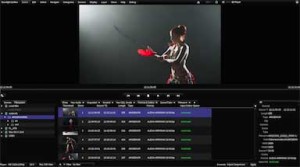 At NAB 2014, FilmLight will demonstrate a new collaboration with Codex that allows every variant of dailies to be created in a single, largely automated process, with an initial Baselight grade forming the foundation of the final look.
At NAB 2014, FilmLight will demonstrate a new collaboration with Codex that allows every variant of dailies to be created in a single, largely automated process, with an initial Baselight grade forming the foundation of the final look.
Codex, (booth C6048) will create a real-world implementation, with a small set and a digital lab in a truck. Live camera signals will be processed using Baselight FLIP, FilmLight’s real-time image processor, which forms the first stage in creating the final grade. FLIP shares the Baselight Linked Grade (BLG) file format with the entire Baselight product range and the metadata created at this stage is carried all the way through to finishing – providing an important link between the cinematographer on-set and the colorist.
The Baselight grades can now be rendered and viewed directly on the Codex Vault. During production the live camera image is graded using the full Baselight toolset available in FLIP. Grading metadata created on FLIP is then transferred to Codex Vault, an on- or near-set media management system that generates all necessary dailies deliverables (including Avid MXF and Apple QuickTime), including sync sound and optional burn-ins.
Grading metadata can also be shared with Baselight Editions and Baselight finishing systems using the OpenEXR-based BLG file format. “The Baselight Linked Grade offers a solution that goes way beyond color,” said Wolfgang Lempp, CEO of FilmLight. “It allows a more efficient and fully integrated editorial workflow with grading decisions passed seamlessly from FLIP on set to Baselight Editions in editorial and VFX, and then onto a full Baselight system for finishing.”
FilmLight is also launching Baselight Dailies designed for mobile postproduction on location. This software-based system runs on standard Mac hardware, and provides the same grades, filters and transforms found in the full Baselight grading system. It manages dailies processing from ingest and review through to color, syncing, and the generation of material for editorial, VFX and other deliverables. This allows an on-set colorist to apply the core color science and initial grade to the material, to be developed in the final grading suite.
“As movies and top-end television productions become more complex and ambitious, the time taken from camera to screen becomes ever more important,” said Lempp. “Getting dailies to editorial with a good idea of the final look is vital. So, too, is getting the raw camera output and metadata to the post house.”





